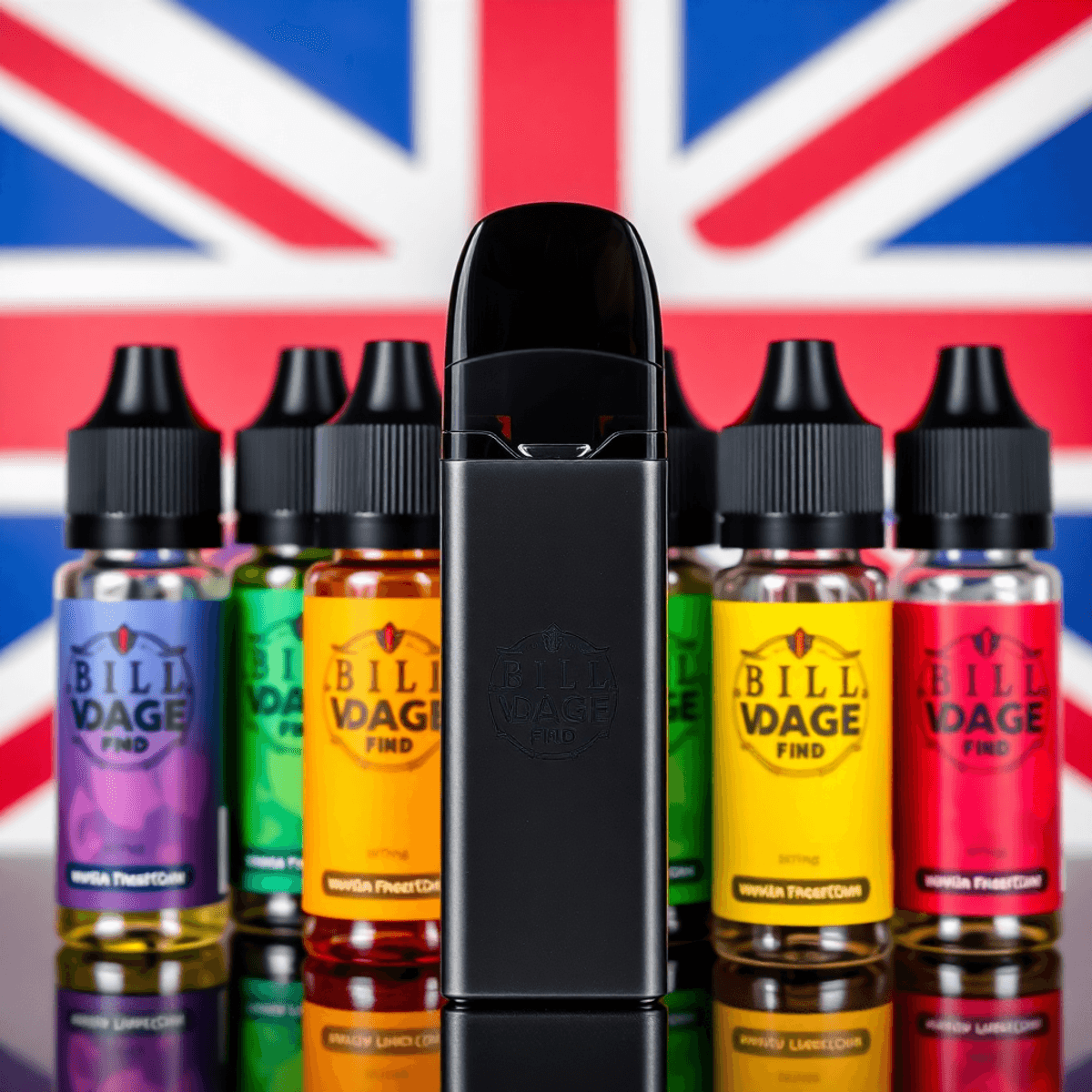Introduction
In recent years, vapes have mushroomed in popularity, sparking debates and piquing curiosity about their impact on health. But are vapes bad for you? Many people wonder if these sleek, electronic devices are a safer alternative to traditional smoking or if they’re just as harmful. This blog aims to navigate the swirling cloud of information, unpacking myths and shedding light on the facts. Whether you’re considering making the switch, just curious, or want to quit smoking, understanding vaping is crucial.
Understanding Vapes
 Image courtesy: Unsplash
Image courtesy: Unsplash
What are Vapes?
Vapes, commonly known as e-cigarettes or electronic cigarettes, are devices designed to heat a liquid to create an aerosol that users inhale. Unlike traditional cigarettes that burn tobacco, vapes rely on a battery-powered heating element to vaporize a liquid that often contains nicotine, flavourings, and other chemicals. Since their introduction, vapes have gained immense popularity, especially among individuals trying to quit smoking traditional cigarettes.
Vapes come in various forms, but all aim to provide a similar sensation to smoking, minus some of the toxins found in combustible tobacco products. However, questions remain: are these devices genuinely less harmful, and do they serve as effective smoking cessation tools?
Types of Vaping Devices
Vaping devices are as diverse as the people who use them. Here’s a quick run-through of the most common types:
– Cigalikes: These devices closely resemble regular cigarettes in shape and size. They are easy to use and typically have a shorter battery life, making them convenient for casual use.
– Vape Pens: Often larger than cigalikes, these pen-shaped devices consist of a battery and a refillable or replaceable cartridge. They offer a longer battery life and are popular for their portability and ease of use.
– Pod Systems: These compact and user-friendly devices use pre-filled or refillable pods. They’re straightforward, making them a hit among new users and experienced vapers alike.
– Box Mods: These are larger and more advanced devices that allow users greater control over the vaping experience. They often feature adjustable settings for temperature, wattage, and power, catering to seasoned vapers seeking a more customisable experience.
With so many options available, choosing the right device often depends on individual needs and preferences. However, it’s also essential to consider the potential health implications associated with each type of device.
How Vaping Works
At its core, vaping involves heating a liquid, commonly known as e-liquid or vape juice, to produce a vapour that users inhale. Vape liquids generally comprise a few key ingredients: propylene glycol (PG), vegetable glycerin (VG), flavourings, and often nicotine.
Here’s a simple breakdown of the process:
1. Activation: When the user takes a puff, it triggers the battery to power a coil.
2. Heating: The coil heats the e-liquid within the device’s tank or cartridge.
3. Vaporisation: As the liquid reaches a specific temperature, it turns into vapour.
4. Inhalation: This vapour is then inhaled through the mouthpiece, delivering the flavour and nicotine into the user’s system.
While the mechanics of vaping might appear straightforward, the real complexity lies in the ingredients and the potential health impacts of inhaling them regularly.
Health Risks Associated with Vaping
Ingredients in Vape Liquids
Vape liquids often consist of propylene glycol, vegetable glycerin, flavourings, and nicotine. Here’s a closer look at these components and their roles:
– Propylene Glycol (PG): A colourless and odourless liquid, PG is used to create a throat hit similar to smoking. It’s also commonly found in food products and considered safe for consumption. However, its inhalation over an extended period could potentially lead to respiratory irritation.
– Vegetable Glycerin (VG): VG is a thicker and slightly sweet liquid, responsible for producing large vapour clouds. Like PG, it’s generally safe when ingested in foods but its effects when inhaled remain less clear.
– Flavourings: These are a significant factor in the appeal of vape liquids, with countless flavours available on the market. However, flavouring additives, especially those designed for food use, may not have been tested for inhalation, raising concerns about their safety when vaporised.
– Nicotine: A primary ingredient in many e-liquids, nicotine is highly addictive and can have adverse effects on health, including raising blood pressure and increasing the risk of heart disease. Some vape users opt for nicotine-free liquids, but there’s still debate about the long-term effects of inhaling other e-liquid components.
Potential Respiratory Issues
While vaping does appear to reduce exposure to numerous toxic chemicals found in traditional cigarette smoke, the risks specifically linked to inhaling vapour are still being studied. Current research indicates potential for several respiratory issues, including:
– Bronchitis: Vapers can experience inflammation in the lungs, which may manifest as bronchitis, leading to coughing and discomfort.
– Pulmonary Conditions: There are concerns that prolonged vaping could contribute to chronic obstructive pulmonary disease (COPD) or exacerbate asthma symptoms.
– Popcorn Lung: A rare disease known as bronchiolitis obliterans has been tentatively linked to diacetyl, a chemical that was found in some flavoured vape liquids. It results in lung damage, making it difficult to breathe. While many manufacturers have moved away from using diacetyl, the risk could still exist in some products.
More comprehensive research is needed to fully understand the long-term impact of these potential issues, especially given the relatively recent increase in vaping popularity.
Impact on Heart Health
When it comes to heart health, vaping is not entirely risk-free. Nicotine, whether smoked through cigarettes or vaped, is known for affecting cardiovascular health. Here’s how vaping could impact your heart:
– Increased Heart Rate: Nicotine stimulates adrenaline release, which can increase heart rate and raise blood pressure. Regular exposure could contribute to the development of heart-related conditions over time.
– Blood Vessel Damage: Some studies suggest that vaping might lead to endothelial dysfunction, damage to the lining of blood vessels. This, in turn, could raise the risk of hardening the arteries, a condition associated with heart disease.
– Oxidative Stress: The vapour from e-cigarettes can contain harmful substances that trigger oxidative stress, potentially leading to inflammation and other heart complications.
While these potential effects sound alarming, it’s important to note that the general consensus among experts is that vaping is less harmful to cardiovascular health than traditional smoking. However, if health is a top priority, abstaining from both smoking and vaping entirely would be the most prudent choice.
In conclusion, while vapes present a less harmful alternative to combustible tobacco, they are not without their own risks and potential health impacts. The decision to use them should be informed by understanding these risks, alongside consulting healthcare professionals for personalised advice and support in quitting smoking or vaping.
Vaping Misconceptions
 Image courtesy: Unsplash
Image courtesy: Unsplash
Vaping has become a popular alternative to smoking cigarettes, and while it’s often perceived as a safer choice, numerous misconceptions surround its use. Let’s dive into some of the common myths and separate fact from fiction.
Vaping vs. Smoking: Is it Safer?
One of the most prevalent misconceptions is that vaping is completely safe. While it may be less harmful than smoking traditional cigarettes, which involve the combustion of tobacco and result in thousands of toxic chemicals, vapes are not without their risks. The key difference between smoking and vaping is that vaping heats a liquid (often containing nicotine) to create a vapour rather than smoke. However, this doesn’t mean it’s risk-free; it simply changes the type and concentration of harmful substances that users are exposed to.
– fewer Chemicals: Compared to cigarettes, e-liquids have fewer ingredients, yet they aren’t all harmless.
– No Tar: Vapes eliminate tar, a by-product of combustion in cigarettes, but this doesn’t eliminate all dangers.
The jury is still out on the long-term effects of vaping due to the relatively short time it has been around, but the statement that vaping is entirely safe compared to smoking is misleading.
The Myth of Nicotine-Free Vapes
Another common misconception is that nicotine-free vapes are completely safe. It’s true that removing nicotine, a highly addictive substance, does eliminate its related risks, such as addiction and increased heart rate. However, even without nicotine, vapes can still contain harmful substances.
– Flavourings and Additives: Many e-liquid flavours contain chemicals that, when inhaled, can be harmful. Diacetyl, a common flavouring agent, has been linked to a serious lung condition called “popcorn lung.”
– Unknown Long-Term Risks: The long-term health impacts of regularly inhaling the myriad of chemicals in e-liquids are still being studied.
Therefore, while nicotine-free vapes eliminate one risk factor, they aren’t necessarily free from other dangers.
Perceived Benefits That Aren’t Backed by Science
Some people believe that vaping can offer health benefits or be used for weight loss or stress management, but these notions are rarely supported by scientific evidence. While some turn to vaping as a less harmful alternative to smoking, believing it will help them manage their weight because nicotine can suppress appetite, this is far from a healthy or sustainable approach.
– Stress Management: Although some users report feeling calmer, this is more likely due to nicotine’s effect on the brain than any therapeutic benefit of vaping itself.
– Quit Smoking Aid: Vaping is often marketed as a tool to quit smoking. While some succeed, research shows that it can just as commonly maintain or increase the use of conventional cigarettes alongside vaping.
It’s crucial to approach vaping with a sceptical mind and understand that any perceived benefits should be critically evaluated, as they may not be backed by scientific research.
The Science Behind Vaping and Health
Understanding the science behind vaping can provide a clearer picture of its impact on health. Scientific research continues to unfold, revealing more about both its short-term effects and potential long-term consequences.
Recent Studies and Their Findings
Recent research has focused on uncovering vaping’s health implications. Various studies have revealed that e-cigarette users can risk respiratory and cardiovascular issues similar to those faced by smokers.
– Respiratory Health: While switching to vapes might lead to slight improvements in respiratory health for smokers, repeated exposure to the chemicals in e-cigarettes could lead to inflammation.
– Cardiovascular Impact: Vaping has been shown to affect heart rate and blood pressure due to the vasoconstrictive effects of nicotine. Even in nicotine-free vapes, other chemicals can pose health challenges.
As scientific exploration continues, the research points toward caution rather than the unreserved acceptance of vaping.
Long-term Effects: What We Know
Studying the long-term effects of vaping is tricky because of its relatively recent surge in popularity. However, researchers are beginning to gather data that suggest potential long-term risks.
– Chronic Obstructive Pulmonary Disease (COPD): Some research indicates a potential link between long-term vaping and COPD, which traditionally affects smokers.
– Cancer Risks: Although vapes eliminate many carcinogens present in tobacco smoke, they aren’t void of all cancerous risks. The presence of formaldehyde and other compounds can still pose a threat.
While definitive conclusions are still forthcoming, these early signs suggest that long-term vaping isn’t without its health risks.
The Role of Flavourings in Vaping Risks
One aspect of vaping that has drawn significant concern is the use of flavourings in e-liquids. While flavours make vaping more appealing, especially to younger audiences, they also come with hidden risks.
– Chemical Composition: Flavourings often contain various chemicals, some of which, like diacetyl, can be harmful when inhaled.
– Allergic Reactions and Sensitivities: Individuals may develop allergic reactions over time to chemical compounds present in different flavours, leading to respiratory issues or other health problems.
– Targeting Youth: The use of sweet, candy-like flavours has been criticized for attracting minors to vaping, potentially leading to long-term nicotine addiction and its associated health implications.
It’s crucial to recognise that flavourings are not just a benign addition but a critical component in assessing the potential risks of vaping. As the market continues to evolve, regulations may need to address these concerns to enhance consumer safety.
In conclusion, while vaping might initially appear as a less detrimental alternative to smoking, it isn’t entirely without health implications. With ongoing research revealing more about the potential risks and effects, it’s essential to remain informed, questioning the common misunderstandings and examining the scientific evidence as we navigate the evolving landscape of vaping.
Vaping as a Smoking Cessation Tool
The idea of using vapes to help smokers kick their cigarette habit has sparked quite a bit of debate over the years. With catchy flavours and trendy designs, vaping has quickly become popular, especially among those looking to escape the grip of tobacco smoke. But the big question remains, is vaping truly an effective tool for quitting smoking?
Can Vaping Help Smokers Quit?
For many smokers, the journey to quitting is akin to climbing a mountain. It’s challenging, and sometimes it feels almost impossible to reach the peak. Enter vaping – a modern alternative that some believe could be the bridge to a smoke-free life. How exactly does it help, you ask?
– Nicotine Substitution: Traditional cigarettes deliver nicotine quickly, satisfying cravings almost instantly. Vapes offer a similar nicotine delivery, minus the tar and most of the harmful chemicals found in standard cigarettes. For some, this can ease withdrawal symptoms and reduce the urge to reach for a cigarette.
– Emulating the Smoking Habit: One of the difficulties in quitting smoking is missing the ritual of the act itself, holding a cigarette, the inhale and exhale, and even the social aspects. Vaping mimics these actions, which can be comforting for those trying to quit.
– Controlled Nicotine Reduction: Many vaping products come with varying levels of nicotine. This allows users to gradually reduce their nicotine intake, helping them to eventually wean off it entirely. Imagine starting with a high-nicotine e-liquid and slowly transitioning to a non-nicotine version. This step-down approach can make the process feel less daunting.
Comparison with Other Cessation Methods
There are numerous smoking cessation methods available today, each with their own advantages and limitations. Here’s how vaping stacks up against some of the most common alternatives:
– Nicotine Replacement Therapy (NRT): NRT includes products like patches, gums, and lozenges. Unlike vaping, these don’t mimic the action of smoking. However, they are effective in providing a steady, controlled source of nicotine and have been widely studied for their effectiveness. Yet, some people miss the behavioural aspect of smoking, which is where vaping can be beneficial.
– Prescription Medications: There are medicines available that help reduce nicotine cravings, but these can come with side effects. Vaping might be seen as a preferable choice for those who wish to avoid medication or those who have had little success with prescription options.
– Behavioural Therapy: Therapy focuses on changing the mindset towards smoking and addressing behavioural reasons behind the addiction. While it doesn’t involve nicotine intake or mimic cigarette use, it’s invaluable when combined with either NRT or vaping.
Vaping might not be the silver bullet in smoking cessation, but for some, it can be an integral part of the process, especially when coupled with behavioural support.
Legal and Regulatory Perspectives
 Image courtesy: Unsplash
Image courtesy: Unsplash
Understanding the legal landscape surrounding vaping is crucial, whether you’re a user, a retailer, or just someone curious about how society is adapting to this trend. Regulations can influence the safety, accessibility, and public perception of vaping products.
Current Regulations on Vaping
Vaping regulations are constantly evolving as authorities attempt to balance public health concerns with the rights of adult consumers. Let’s take a quick tour of the current state of play:
– Product Standards: Many countries have set standards for vape products to ensure safety and quality. This includes regulations on the types and concentrations of chemicals used in e-liquids, as well as standards for the devices themselves, which must be designed to prevent hazards like leaks and explosions.
– Advertising Restrictions: To prevent misleading claims and appeal mainly to adults, restrictions have been put in place on how vaping products can be marketed. This ensures that advertisements do not glamorise vaping or imply it to be entirely risk-free.
– Health Warnings: Much like cigarette packaging, many regions require health warnings on vape products. These messages aim to educate consumers about potential health risks, including addiction, even if they’re not as well understood as those associated with traditional smoking.
Regulations can vary significantly from one country to another and even between regions within a country. It’s wise to familiarise oneself with local laws before making assumptions about vaping practices and permissions.
Age Restrictions and Marketing to Youth
The rise of vaping among young people has rung alarm bells worldwide, prompting a push for stricter controls to prevent early exposure to nicotine. Here’s a closer look at how age limits and marketing restrictions aim to protect youth:
– Minimum Age Requirements: Just like alcohol or tobacco products, vaping is subject to minimum age requirements. Typically, the legal age is 18 or 21, depending on the region. Retailers must verify age before selling vape products, with significant penalties in place for non-compliance.
– Flavour Regulations: One major concern is the appeal of various e-liquid flavours to young audiences. As a result, some jurisdictions have banned flavours deemed attractive to children and teenagers, such as candy or dessert-like options. The idea is to reduce the allure that vaping might hold for this age group.
– Marketing and Sponsorship: A key regulatory target has been the portrayal of vaping in media and advertising. The aim is to limit exposure to teens and young adults by preventing ads in youth-centric spaces and banning sponsorships at events largely attended by younger audiences.
By placing such controls, regulators hope to minimise the initiation of vaping among youths who might otherwise never start smoking. It’s a contentious area, balancing the need to support adult smokers looking to quit with protecting the younger generation from new forms of addiction.
With the landscape of vaping constantly shifting, staying informed is critical. Whether as an aid in quitting smoking or simply understanding the regulatory frameworks, awareness is your best ally in navigating the sometimes murky waters of vaping-related matters.
Conclusion
In conclusion, the question of whether vapes are bad for you doesn’t have a straightforward answer. It largely depends on factors like the type of vape product used and whether it’s being used as a smoking cessation tool. While vaping might offer a less harmful alternative for smokers looking to quit traditional cigarettes, it’s not without its own set of health risks. It’s essential to weigh the pros and cons and consult with healthcare professionals to make informed decisions about vaping. Remember, staying informed and cautious helps minimise potential health risks.




